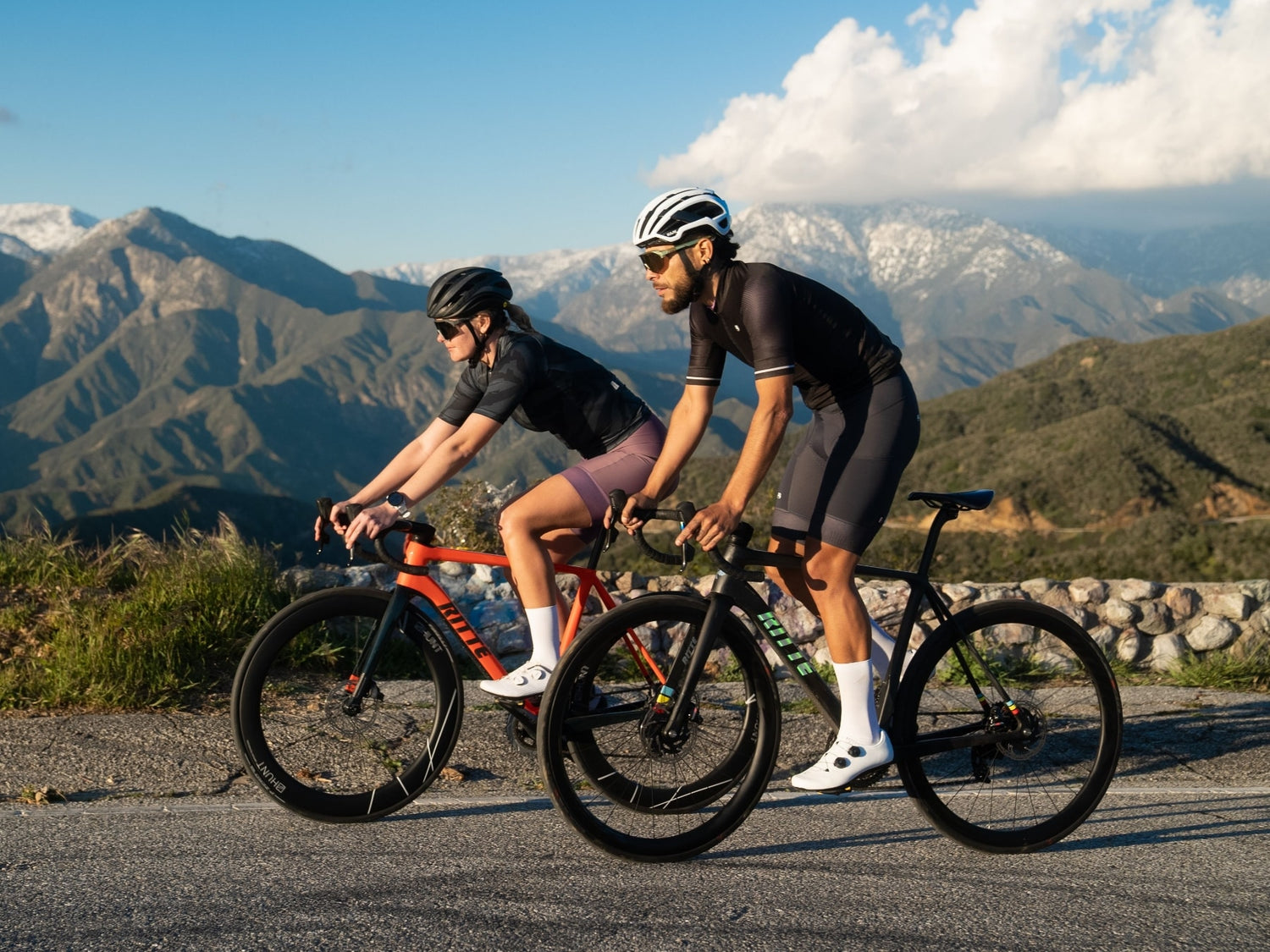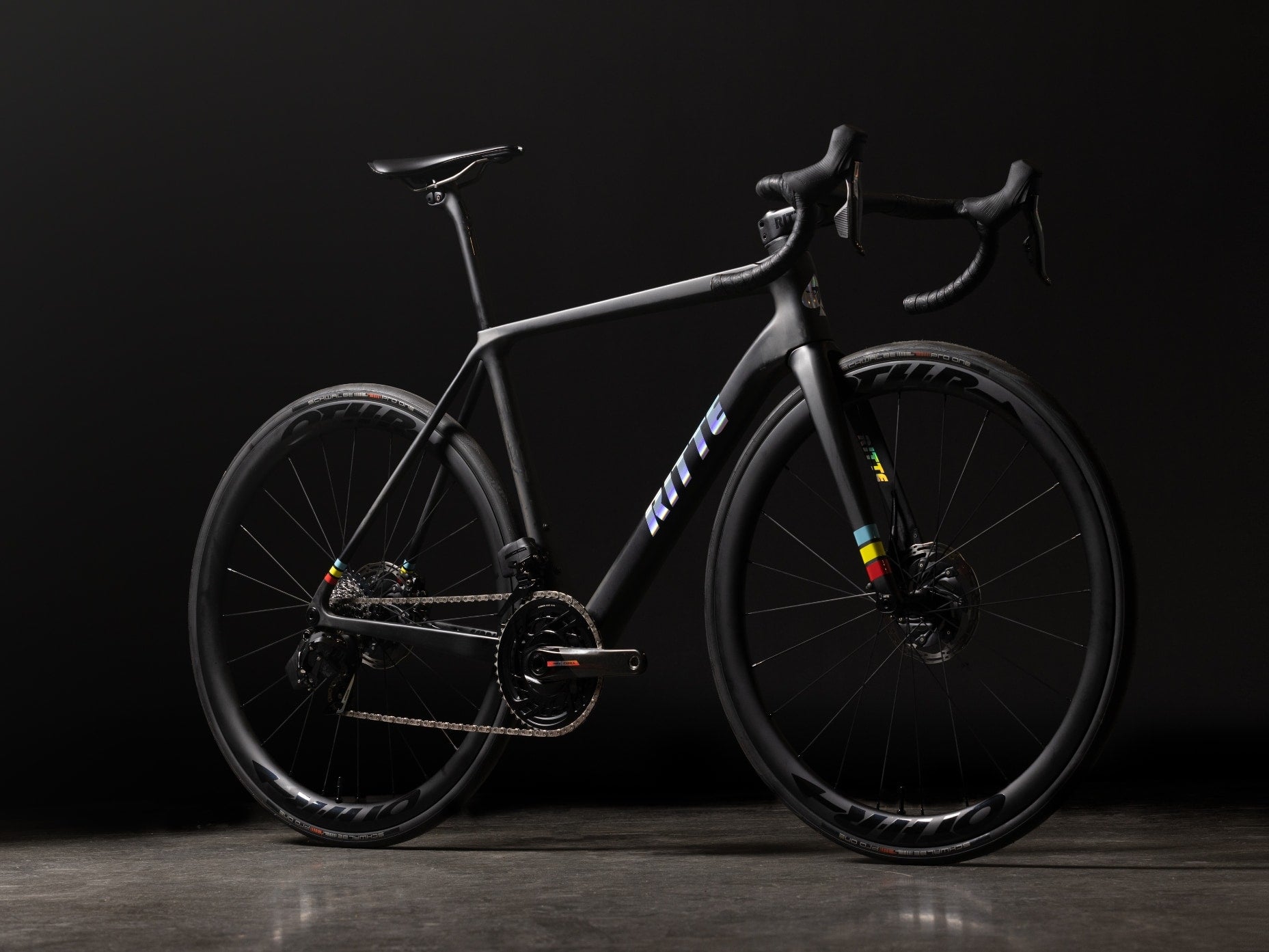We’re sorry to say, it’s you, not the bike. That aero bike you coveted with the little kamm tails, truncated d-shaped seatposts, funky handlebars - the one that’s supposed to make you an unbelievable amount faster on the group ride…we’re not saying it’s a lie, but it ain’t gonna take you to the World Tour despite bearing a UCI certification sticker.
So why rattle your teeth out and deal with the headache of proprietary parts all for, at most, a few seconds? It’s a pretty good question. One we certainly asked ourselves. It’s not to say we didn’t do anything aero-focused. We certainly have. But it hasn’t been the sole guiding principle of our bike design. If you haven’t read our thoughts on Geometry, Handling, and Fit - check them out at these links. We talk about speed / aerodynamics a bit in the Fit blog, but it was a bigger focus when looking at the new Esprit design.
The rider represents more aerodynamic drag than any part of the bike. When comparing modern aero bikes to an all-rounder, the differences aren’t as big as they once were. This can be seen by some brands dropping their aero frames altogether and by others inventing new drag measurements to show off their gains versus previous generation bikes. Many of the newest aero releases show drag / wattage figures that exclude the rider altogether to create the perception of a larger difference. But, the bike isn’t going anywhere without you, the rider, aboard it. We’ve got to look at drag and aerodynamics as a system.

The rider is literally a sail on the bike. If you want to test that, go for a ride in a race-cut jersey and then in a t-shirt, you can feel the difference. Even easier, ride on the tops of the bars in a relaxed position and then as low as you can go in the drops - big difference. The frontal area and aero optimization of a bike frame, by comparison, is quite small. A bigger increase in efficiency can come from your position on the bike.
Rather than looking at the bike as a standalone object we are looking at the rider on the bike - much like a TT position is all about rider optimization. We don’t need to go that far, you probably don’t want to ride in a TT position all day anyways. Plus, you already know we’re keen on bikes that handle and descend well - sorry aero-bar aficionados!
The Esprit, like all of our bikes, is racy without being extreme. It’s designed to put the rider into a fast and balanced position. These bikes are long and low, within reason, to keep the rider as low profile as possible.

So the Esprit is pretty well optimized, without forcing you into any wonky parts or gimmicks. It’s got tube profiles and front end shaping that are efficient without being harsh, it has hidden cables and an aero handlebar that’s familiar and comfortable - so what’s left? It’s the fit. Getting the rider into an efficient position. This means comfort for long days, the ability to make good power without hindrance, and being as small in the wind as reasonably possible.
That all comes down to bike fit. If you’ve ever emailed us about sizing, you know we don’t take this lightly. We want to make sure you have the best riding experience possible on our bikes, and our dealers do too. Every bike we sell, direct or through a dealer, includes a knowledgeable fit assessment if you need or want to take us up on it. Want the best fit on your new ride? That’s a feature of the Esprit that goes beyond the spec sheet.



